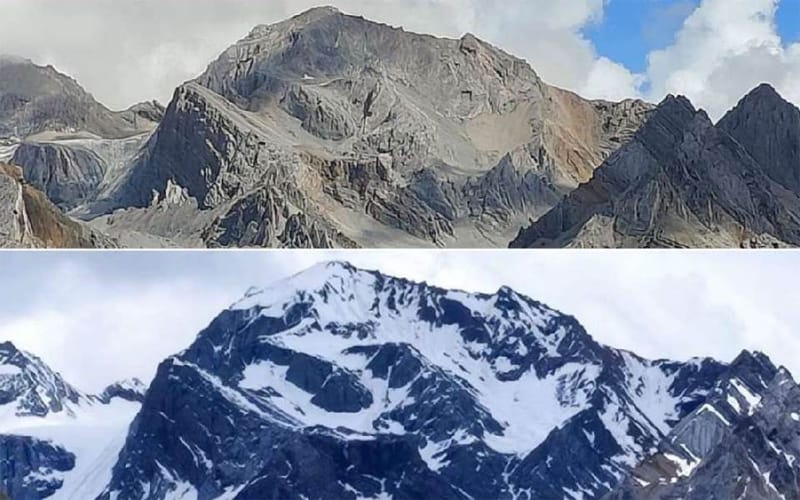
Last week, Uttarakhand’s Om Parvat experienced total lack of snowfall for the first time in history, which raised concerns among the visitors due to the rare occurrence. Images circulated by nearby inhabitants depicted the typically snow-covered peak looking desolate.
There’s also the worry about how the lack of snow may affect tourism in the area. The prolonged lack of snow could be disruptive to the local economy, which is mostly dependent on tourists drawn to Om Parvat’s stunning snow-capped landscape. Luckily, Om Parvat received some respite when snowfall fell on Monday night. But there’s still no resolution to the underlying environmental problems.
Om Parvat is a popular tourist destination. It is located in the Vyas Valley at an elevation of about 14,000 feet. The place received its name because of the way its snow naturally produces a design that resembles the Hindi letter “Om.”
What led to the snow disappearance at Om Parvat?
This year’s total lack of snowfall is being ascribed to the upper Himalayas’ five years of sparse precipitation and inconsistent snowfall.
Locals said that the notable rise in tourists since Prime Minister Narendra Modi’s visit to Jolingkong in October of last year may also be a factor, as the mountain’s ecology is being disrupted.
According to experts, the melting of snow serves as a clear reminder of the current state of the climate crisis. Eco-sensitive areas in the Himalayas are being negatively impacted by rising temperatures brought on by a rise in vehicle emissions and global warming, according to Sunil Nautiyal, Director of the GB Pant National Institute of Himalayan Environment in Almora. He emphasised the necessity of strict regulations to safeguard these areas, such as figuring out the tourism spots’ carrying capacity and controlling forest fires, which release carbon and harm the fragile ecosystem.
Uneven weather in the coldest places in India
A strange unusual weather phenomenon associated with climate change earlier this year resulted in the cancellation of all flights to and from Leh, Ladakh. The fall in air density that caused the cancellations prevented the flights from taking off.
Unexpectedly high temperatures caused the flights to be grounded, which is an unusual occurrence given that Leh is located at an elevation of 11,000 feet, where winter temperature can reach -20 degrees Celsius.
[With inputs from PTI]
